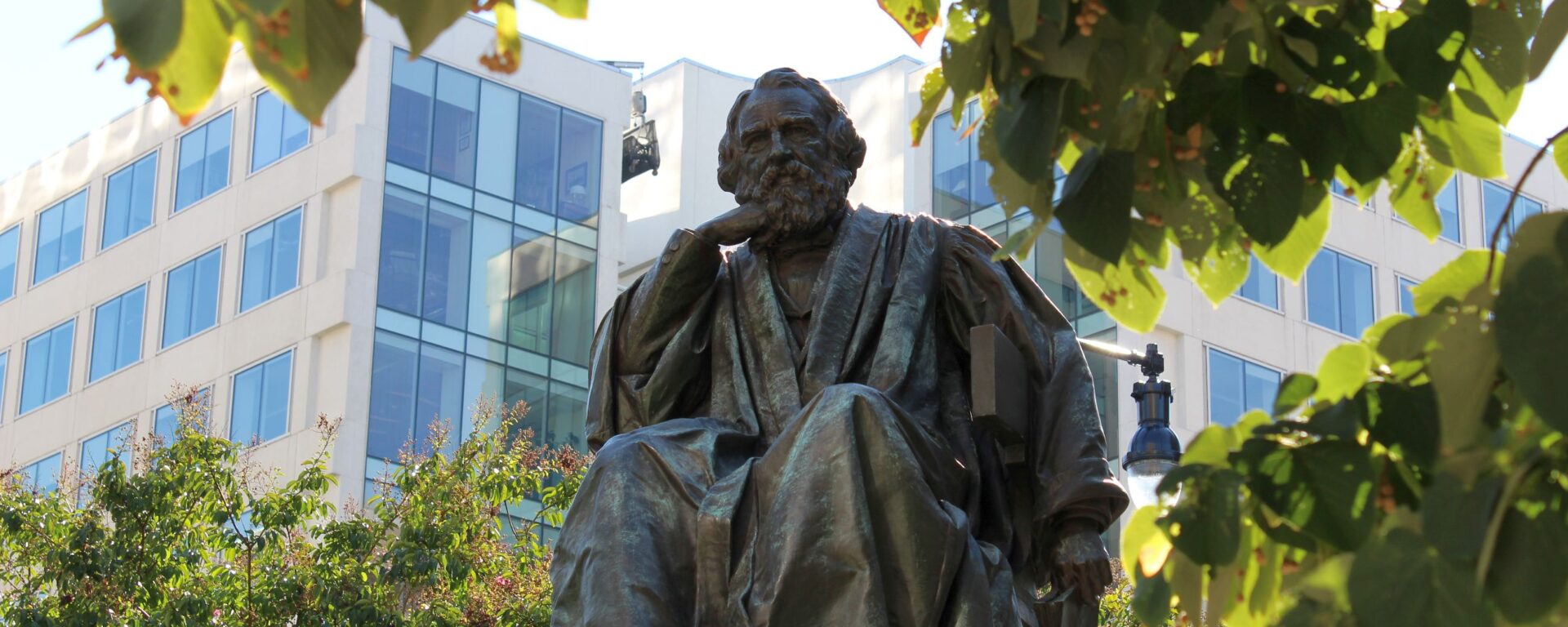“Love keeps the cold out better than a cloak.”
On warm days, the park between Connecticut Avenue, M Street NW, and 18th Street NW is full of D.C. residents and tourists stopping for a rest beneath its trees. The neighborhood around it is filled with restaurants and bars, making it the perfect place for an outdoor lunch. In the middle sits the bronze statue of Henry Wadsworth Longfellow, seated with a book in his left hand, chin resting on his right.

The statue (the first in D.C. of a literary figure) was unveiled in 1909 by his granddaughter, Erica Thorp, to a crowd of nearly 1,000. Speakers at the ceremony were contemporary celebrities such as the Polar explorer Maj. Gen. A.W. Greely, educator and intellectual Bliss Perry, Chief Justice Melville Fuller (of Plessy v. Ferguson “separate but equal” infamy), and Attorney General George W. Wickersham (who accepted the statue on behalf of President Taft).
The sculpture was made by William Couper and his father-in-law Thomas Ball. The statue was begun by Ball, whose other well-known D.C. sculpture is the Emancipation Memorial in Lincoln Park. Couper finished the statue and casting was completed in early 1908. Couper’s sculpture of founding father John Witherspoon is across the intersection of Connecticut and 18th, adjacent to N Street NW.

Longfellow is one of the great American poets. Today he is best known for his poem “Paul Revere’s Ride,” that children still read in elementary school (and is the reason few remember William Dawes who also warned of the British that night). His poetry was lyrical and popular. In a time before radio or television, families would sit around the fireside and read poetry aloud. In 1877, his 70th birthday was celebrated around the nation. At the time, essayist George Curtis said, “I believe there is no man living for whom there is so universal a feeling of love and gratitude, and no man who ever wore so great a fame so gently and simply.”

Longfellow wrote about myths, legends, and history. “The Song of Hiawatha” – while not about the historical figure – was based on Ojibwe legends. “Evangeline” is a tragic love story set in the midst of the British expulsion of the Acadian people from Canada during the French and Indian War. He was the most famous poet in America during his life and is the only American honored with a bust in Poets’ Corner of Westminster Abbey. He was admired by Abraham Lincoln, Queen Victoria, Edgar Alan Poe, and Charles Dickens. Walt Whitman said of him after his death, “I should have to think long if I were ask’d to name the man who has done more and in more valuable directions, for America.”

Resources used for this article:
https://en.wikipedia.org/wiki/Henry_Wadsworth_Longfellow_Memorial
https://en.wikipedia.org/wiki/Henry_Wadsworth_Longfellow
https://en.wikipedia.org/wiki/William_Couper_(sculptor)
https://en.wikipedia.org/wiki/Thomas_Ball_(artist)
http://dcist.com/2007/11/revisiting_the_henry_wadsworth_longfellow_monument.php
http://dcmemorialist.com/longfellow-statue/
https://dcbikeblogger.wordpress.com/2014/07/16/henry-wadsworth-longfellow-statue/
